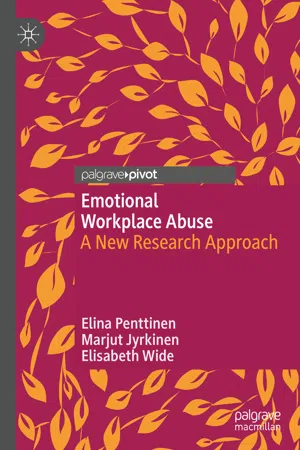I started as an early-career post-doc in a new research project. I was an experienced researcher and felt that I had a lot to give to the team. It seemed to me [at the time] that the rest of the team did not see it exactly the same way and I felt I really had to make an effort to become a member of the team. At first, it seemed that our supervisor wanted us to work together, but in hindsight, I realized that he fed into the animosity and hostility between me and the rest of the team. For example, he would come to me and warn me that the others were talking negatively about me behind my back and he warned me not to befriend any of the team members. (…)Then the behaviour of the supervisor changed considerably. He became controlling, all of us had to report our hours more carefully, we had to ask for permission for the smallest things we were about to do. He also started using finances to control us and created an atmosphere of uncertainty in terms of whether someone’s work contract could be extended, or whether someone could go to a conference or not. At that time, it also became clear that one of the team members was having an affair with him. He would openly woo some of the team members and then act unpleasantly towards some of the others. The whole situation was weird and it affected the entire working atmosphere.Most of us became physically and emotionally unwell. More information about sexual harassment, extortion with money, reputation and other forms of emotional abuse started to appear. I and a couple of the team members took this to the occupational safety and the upper management.It was at that point that the supervisor started blaming me for everything that was going wrong. He rallied a few of the team members, who still believed in him, to attack me at a workplace meeting and to continue to do all kinds of hostile things towards me. I was losing my strength. I could not sleep anymore. I felt ill all the time and could barely eat anything, I would cry easily, I became depressed and I was constantly afraid.After one of these weird workplace meetings, I had a breakdown. I just cried and cried and I decided I could not help anyone else there anymore. I had to leave this workplace and I had to take care of myself first. I went to an occupational psychologist and with their advice and support, I was able to recover and break free from the manipulative game.But what did the upper management do? Nothing! All they did was to organize a workplace survey in which there were a couple of questions concerning working environment and safety. We responded truthfully and I knew that there were some very serious allegations towards the supervisor in the survey results. The upper management decided to sweep the whole thing under the rug. Moreover, some of the replies were read out loud at a public meeting for the whole organization, even though they had ensured that the individual replies would not be made public. Moreover, there was no analysis of the survey data and no further action was taken. Since I left, what I have heard is that the same project continues only with a smaller research team and less funding. The manipulation also continues. It is only covered up much better than before. After this experience, I have decided I will never submit to such behaviour at any workplace and will not be afraid to speak up when I see and hear wrongdoings. (Jenny)

Emotional Workplace Abuse
A New Research Approach
- English
- ePUB (mobile friendly)
- Available on iOS & Android
About This Book
Addressing emotional workplace abuse, this Palgrave Pivot takes a multidisciplinary approach which combines feminist research on violence with organisation and management studies, in order to offer a new approach on workplace violations. The book analyses why it is difficult for targets and organisations alike to name and identify emotional abuse and addresses the severe negative effects of abuse on the targets' lives. It brings ethical leadership to the fore as a means to foster sustainable organisations. Using empirical data and research, this book highlights subtle forms of violations that take place in the workplace, and provides analysis from the perspective of the target. A valuable read for scholars and practitioners involved in organisational management and HRM, Emotional Workplace Abuse will help readers to understand the importance of sustainable leadership in preventing emotional workplace abuse.
Frequently asked questions
Information
1. Emotional Workplace Abuse Matters
Abstract
Keywords
Feminist researchExperience of abuseViolence and violationsOrganizationsPublic–privateContinuumTable of contents
- Cover
- Front Matter
- 1. Emotional Workplace Abuse Matters
- 2. The Relevance of Identifying and Naming Emotional Workplace Abuse
- 3. Experiences of Emotional Workplace Abuse
- 4. Methods to Prevent and Tackle Emotional Workplace Abuse
- Back Matter